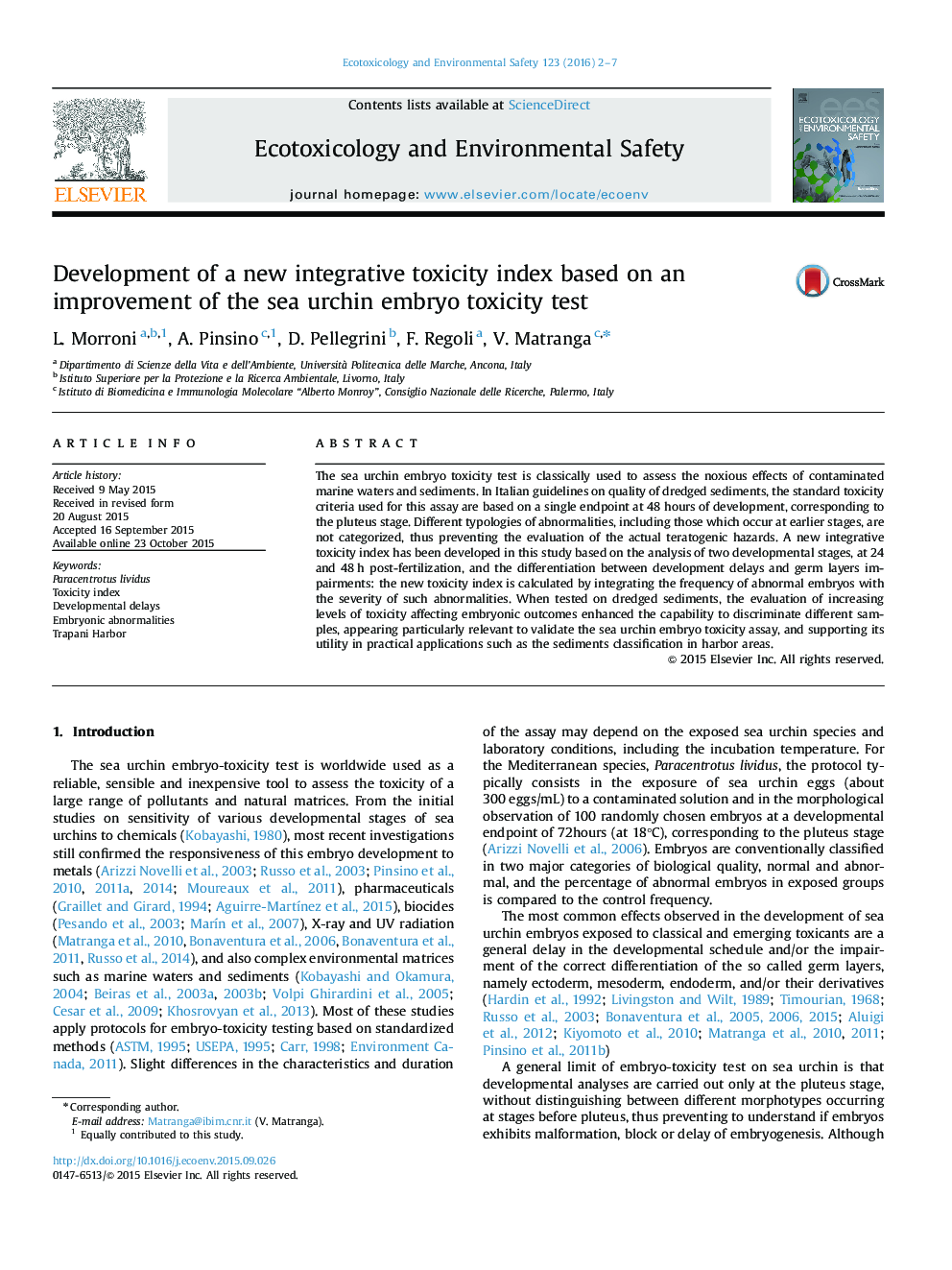| Article ID | Journal | Published Year | Pages | File Type |
|---|---|---|---|---|
| 4419492 | Ecotoxicology and Environmental Safety | 2016 | 6 Pages |
•P. lividus abnormal embryonic development was classified into toxicity categories.•A new integrative toxicity index was developed to improve the assessment of toxicity.•The harbor of Trapani was chosen as a model case-study for sediment evaluation.
The sea urchin embryo toxicity test is classically used to assess the noxious effects of contaminated marine waters and sediments. In Italian guidelines on quality of dredged sediments, the standard toxicity criteria used for this assay are based on a single endpoint at 48 hours of development, corresponding to the pluteus stage. Different typologies of abnormalities, including those which occur at earlier stages, are not categorized, thus preventing the evaluation of the actual teratogenic hazards. A new integrative toxicity index has been developed in this study based on the analysis of two developmental stages, at 24 and 48 h post-fertilization, and the differentiation between development delays and germ layers impairments: the new toxicity index is calculated by integrating the frequency of abnormal embryos with the severity of such abnormalities. When tested on dredged sediments, the evaluation of increasing levels of toxicity affecting embryonic outcomes enhanced the capability to discriminate different samples, appearing particularly relevant to validate the sea urchin embryo toxicity assay, and supporting its utility in practical applications such as the sediments classification in harbor areas.
